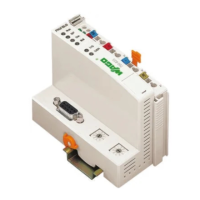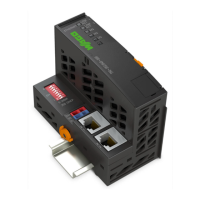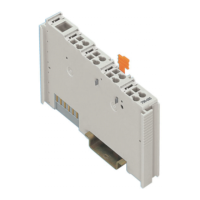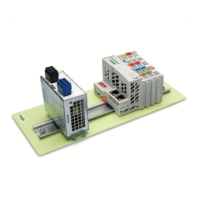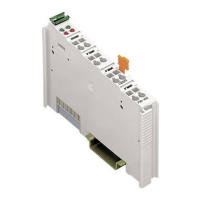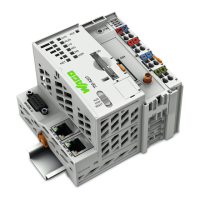198 • Fieldbus Communication
ETHERNET
WAGO-I/O-SYSTEM 750
Linux Fieldbus Coupler
10.1.2.3 Coupler Modules
There are a number of hardware modules that allow for flexible arrangement
for setting up an ETHERNET network. They also offer important functions,
some of which are very similar.
The following table defines and compares these modules and is intended to
simplify the correct selection and appropriate application of them.
Module Characteristics/application ISO/OSI
layer
Repeater Amplifier for signal regeneration, connection on a physical level. 1
Bridge Segmentation of networks to increase the length. 2
Switch Multiport bridge, meaning each port has a separate bridge
function.
Logically separates network segments, thereby reducing network
traffic.
Consistent use makes ETHERNET collision-free.
2 (3)
Hub Used to create star topologies, supports various transmission
media, does not prevent any network collisions.
2
Router Links two or more data networks.
Matches topology changes and incompatible packet sizes (e.g.
used in industrial and office areas).
3
Gateway Links two manufacturer-specific networks which use different
software and hardware (i.e., ETHERNET and Interbus-Loop).
4-7
Tab. 10-2: Comparison of Coupler Modules for Networks
10.1.2.4 Transmission Mode
Some ETHERNET based WAGO couplers/controllers support both 10Mbit/s
and 100Mbit/s for either full or half duplex operation. To guarantee a safe and
fast transmission, both these couplers/controllers and their link partners must
be configured for the same transmission mode.
Note
A faulty configuration of the transmission mode may result in a link loss
condition, a poor network performance or a faulty behavior of the
coupler/controller.
The IEEE 802.3u ETHERNET standard defines two possibilities for
configuring the transmission modes:
• Static configuration
• Dynamic configuration

